 Without further ado, here’s the video: The following video is sourced from MFORCEContent:
Without further ado, here’s the video: The following video is sourced from MFORCEContent:
Recently, the manual version of the GAC Honda Civic, also known as the GAC Honda Type R, has finally been delivered to users. Born in the era of National VI, surrounded by GPF (Gasoline Particulate Filter), many consumers are understandably concerned about whether this addition will affect the new car’s power. Previously, it was difficult to obtain accurate power data from the CVT version, so the arrival of this manual version will finally unveil this mystery.
 This article will address two questions that everyone is concerned about:1. How much better is the factory power of the Type R compared to the tenth-generation Civic?2. Has the modification limit of the L15C engine increased or decreased?
This article will address two questions that everyone is concerned about:1. How much better is the factory power of the Type R compared to the tenth-generation Civic?2. Has the modification limit of the L15C engine increased or decreased? 1: From the official data, it appears to be more excellent:Before testing, let’s take a look at the official data. On paper, the new car is actually slightly better than the old model, with horsepower increased by 5Ps and torque increased by 14Nm.
1: From the official data, it appears to be more excellent:Before testing, let’s take a look at the official data. On paper, the new car is actually slightly better than the old model, with horsepower increased by 5Ps and torque increased by 14Nm.
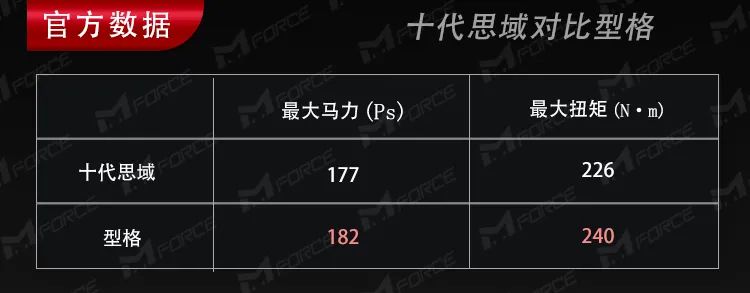
Although the Type R engine is the same as the tenth generation, both use the L15 series engine, the engine model suffixes are different. The Type R uses the L15C engine, while the old model (tenth-generation Civic) uses the L15B. The most significant structural change between the two engines is that the L15C has added VTEC on the exhaust side. Some may ask why VTEC is not also used on the intake side?
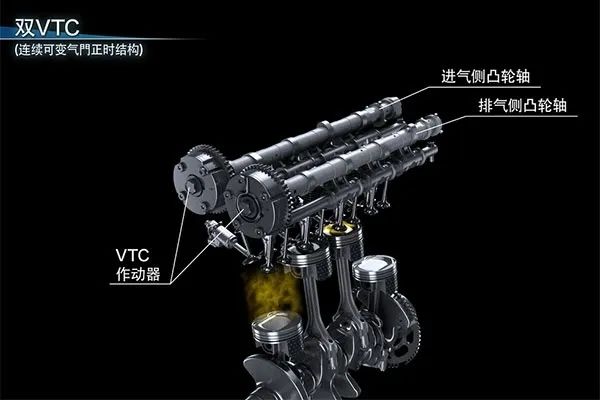 (Schematic diagram of Honda’s 2.0L VTEC turbo engine)
(Schematic diagram of Honda’s 2.0L VTEC turbo engine)
As we all know, the working principle of a turbocharged engine relies on exhaust gases to drive the turbine, which in turn forces air into the cylinder. Therefore, for a turbocharged engine, utilizing VTEC can enhance exhaust efficiency, allowing the engine to build boost at lower RPMs, which significantly aids in improving intake efficiency. While having an additional intake-side VTEC would be better, it is not very friendly for an engine that also needs to consider fuel economy.
Thus, theoretically, adding VTEC on the exhaust side means that the modification potential is higher than that of the tenth-generation Civic’s L15B.
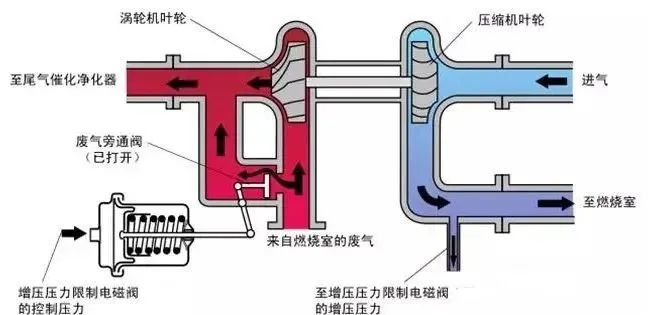
It is worth mentioning that from the engine compartment layout, in order to lower intake temperatures, the intake position and design of the Type R have changed compared to the tenth-generation Civic. The new design helps reduce intake temperatures, which aids in minimizing engine knock.
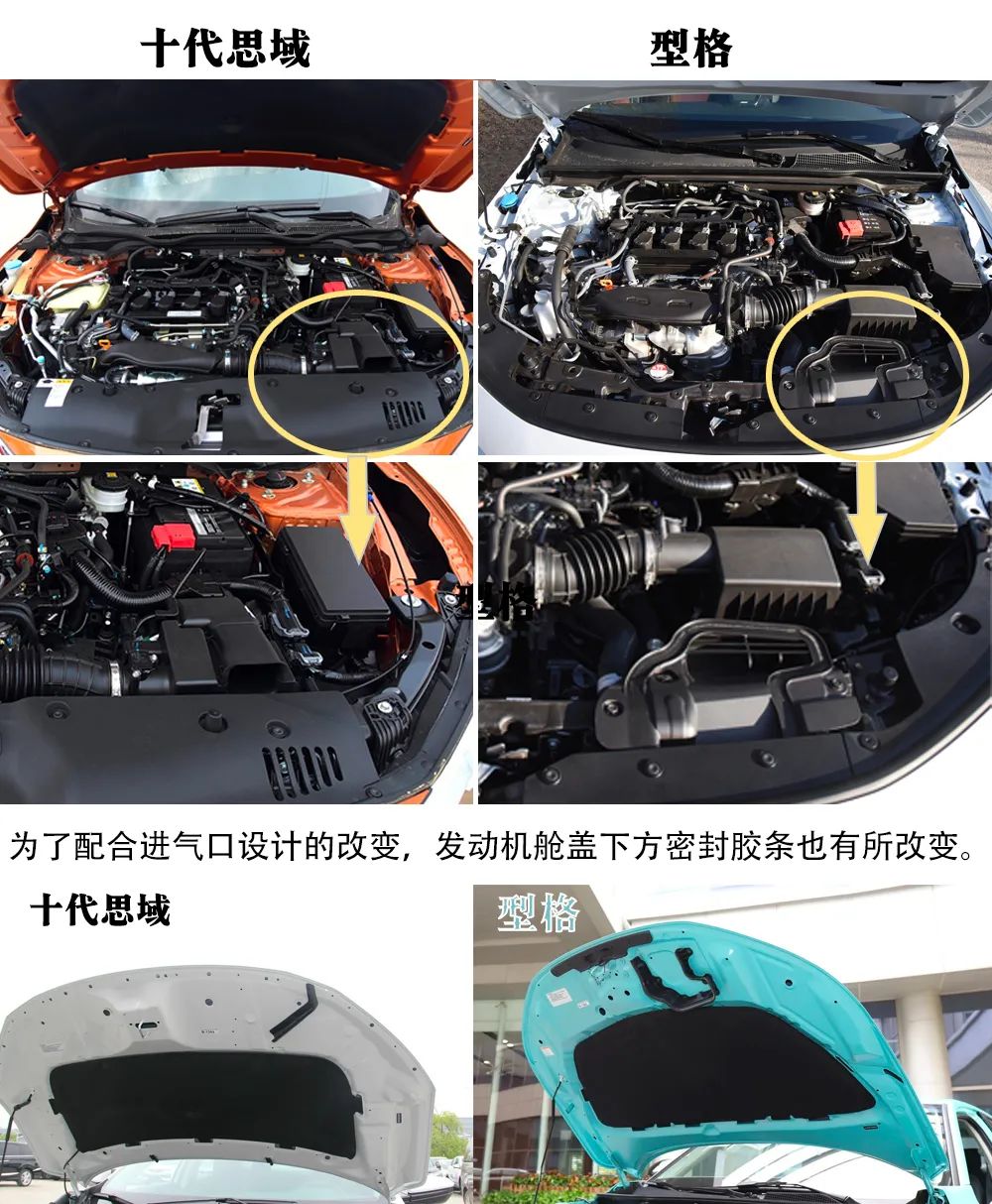
(Schematic diagram of intake changes between new and old models)
From the official data, the new model shows improvements over the old model, but what does the actual power curve performance look like? Let’s directly test it on a dynamometer. This time, we will fix the transmission in third gear, with a gear ratio of 5.6:1, which is identical to the manual transmission of the tenth-generation model.
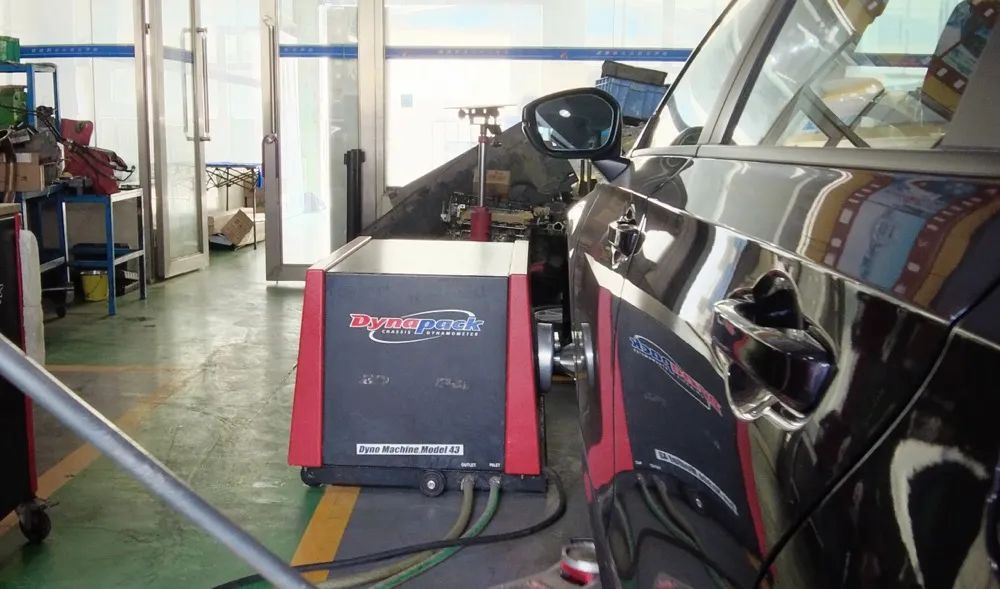
In a round of dynamometer testing, we obtained the power curve graph for the Honda Type R in its factory state.
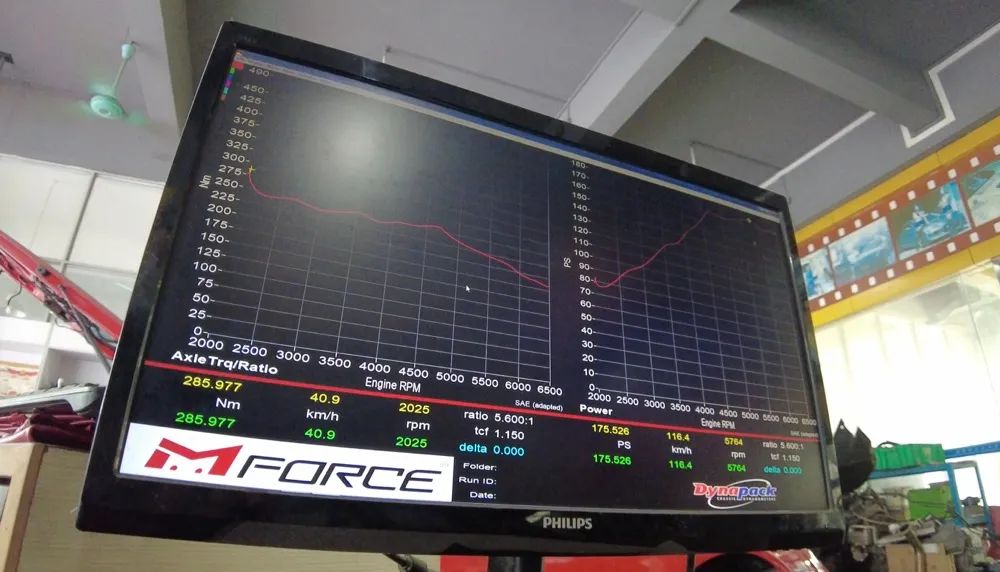
(Dynamometer test graph of the Type R in factory state)
The car’s factory maximum torque is approximately 286Nm, and our actual measurement is 45Nm higher than the factory data, with a maximum horsepower of 175.5Ps, which is basically consistent with the factory figures. When compared to the tenth-generation model (tested under the same machine and gear conditions), the dynamometer data shows that the torque is over 30Nm higher than the factory figures. It seems that the actual test data exceeding factory specifications is a tradition of the L15 series engines.
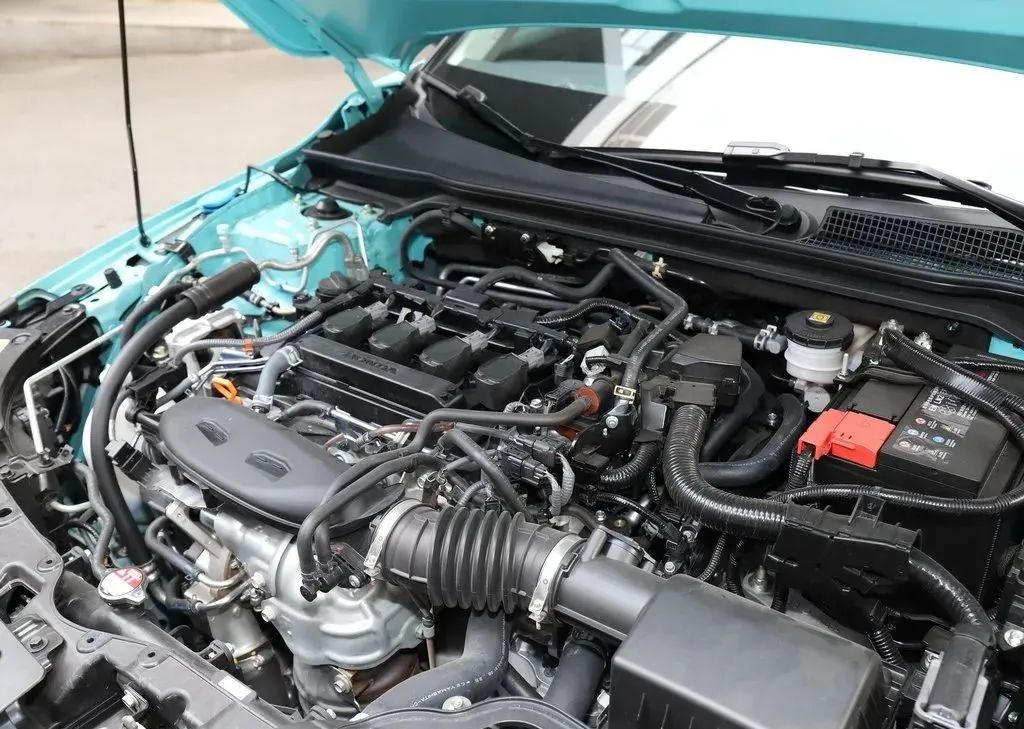
From the curve graph, it can be seen that the Type R has a higher overall torque output compared to the factory figures of the tenth-generation Civic. Thanks to the addition of VTEC, the torque platform of the Type R’s L15C engine comes in earlier, and the power curve is smoother. This means that during driving, the L15C can provide a more linear, smooth, and powerful acceleration between 2300-4700rpm.
2: Has the modification limit increased?
Since we mentioned above that theoretically this engine has higher modification potential, let’s now take a look at what power levels can be achieved under factory hardware conditions by fine-tuning the program.
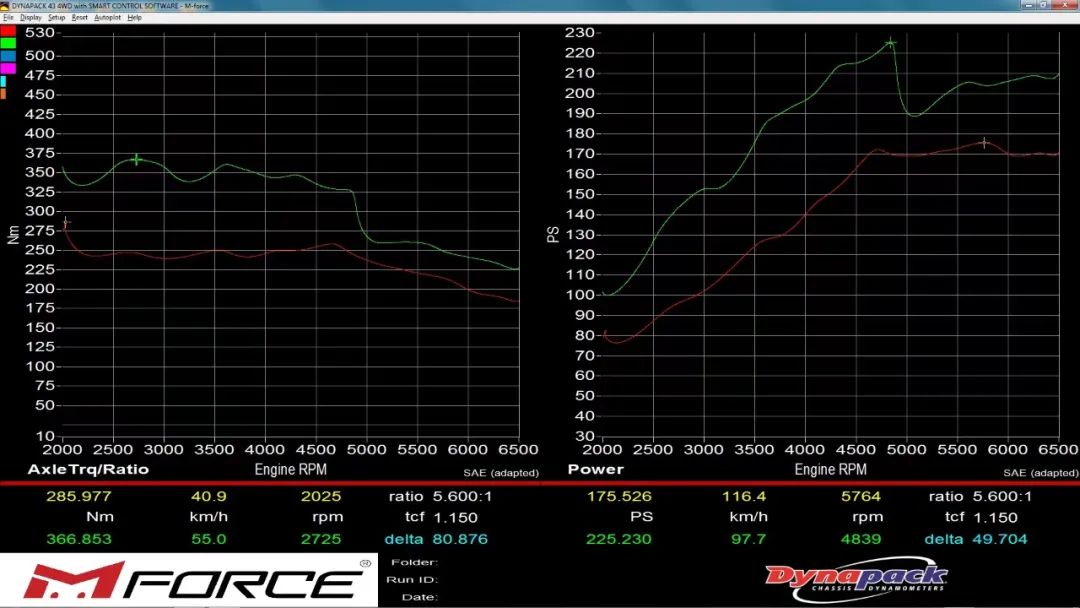
After the initial optimization and upgrade of this new machine system, we can see that the power output curve has improved overall. The maximum torque output increased from the original 286Nm to 366.8Nm, and the maximum horsepower increased from 175.5Ps to 225Ps. However, compared to the tenth-generation Civic’s L15B, the peak torque is slightly lower, but the stability of the Type R around the peak torque point is unmatched by the L15B of the tenth-generation Civic.
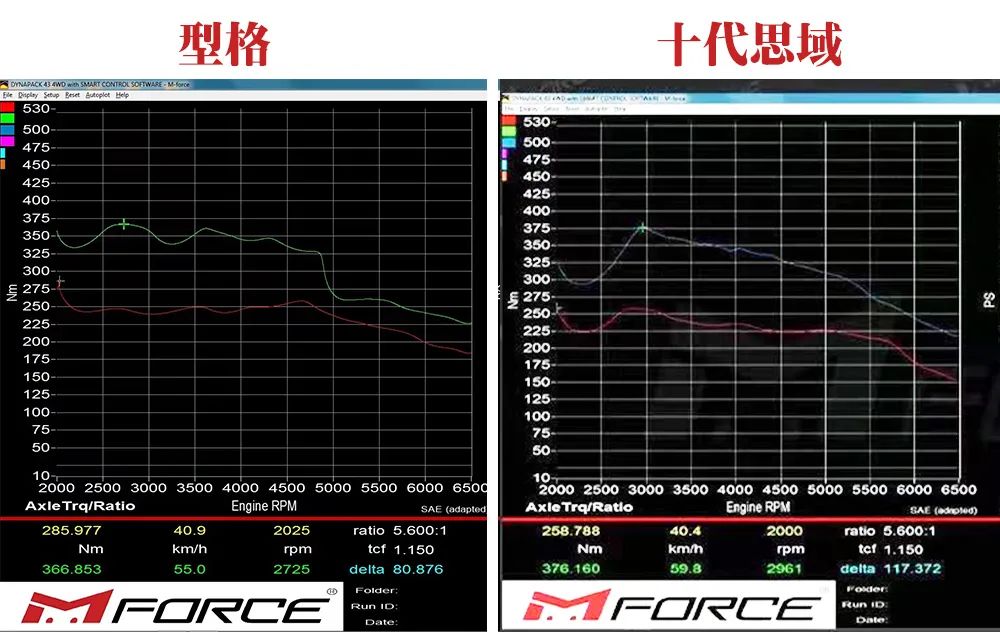
After program optimization, while the overall torque platform has increased, the width of the platform remains relatively consistent with the factory state. However, after 4800rpm, the power curve suddenly drops and then rises again. We initially suspect this is related to the engine’s knock control.
L15 series engines are known to have overheating issues, which has troubled enthusiasts for many years. This time, the Type R has added a GPF to the L15C engine to comply with the National VI B emission standards. The addition of the GPF undoubtedly increases exhaust resistance, leading to further increases in engine temperature, which is particularly problematic for the already heat-sensitive L15 series engines. Excessive engine temperatures can easily lead to engine knock, which brings various negative impacts to the engine.
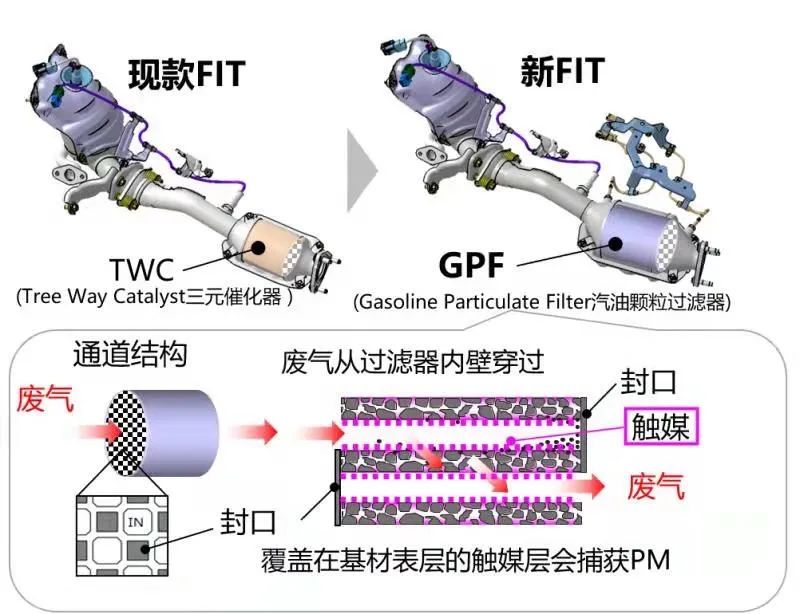
(Schematic diagram of the Fit GPF)
Therefore, to enhance engine reliability and fuel adaptability, the L15C has made significant changes in knock control. Specifically, around 5000rpm, regardless of whether there is actual knock or excessive temperature rise, the knock control system may activate. In simple terms, when there are signs of knock, the system begins to intervene automatically to protect the engine. The execution of knock control generally involves retarding ignition timing and reducing turbo boost. Thus, under this knock control mechanism, it is inevitable to experience sudden power loss, leading to the fluctuations we observed on the dynamometer.
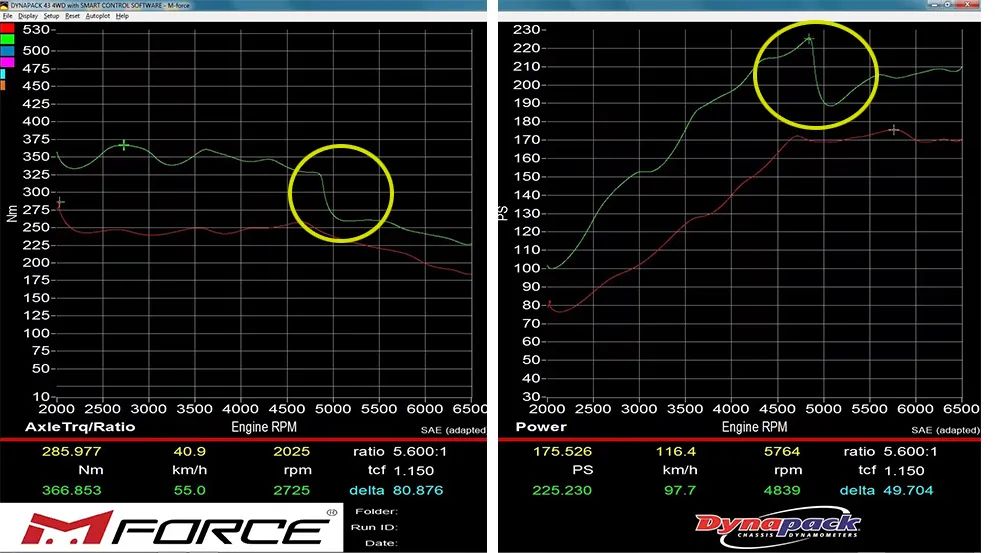
Additionally, to reduce knock, the compression ratio of the L15C has been lowered compared to the L15B (from 10.6 to 10.3). Of course, this measure not only enhances engine reliability but also allows it to better adapt to the varying quality of domestic fuel.

Due to a series of significant objective factors, when we first optimized the ECU of the Type R power unit, we chose a more conservative approach, ensuring sufficient power output in the early stages while making the vehicle more enjoyable than the factory version, all while protecting the engine from damage. Therefore, we did not push the engine power to its limits directly. Currently, we continue to research based on known data conditions, aiming to find the best balance point. For solutions to this issue and the final tuning results, please stay tuned for the next content.
THE END

Good news! To facilitate communication among car enthusiasts, we will soon establish the “VTEC Fan Owner and Enthusiast Group.” Those who wish to join can long-press the QR code on the left to add WeChat, and please note your vehicle model (if not available, please write VTEC Fans). We will invite you to join the group.